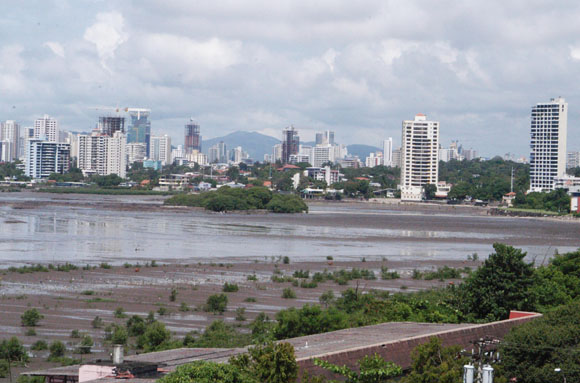Bay of Panama, Panama

Panama is a small Central American country bordered on the northwest by Costa Rica and on the southeast by Columbia. Operation of the Panama Canal, which connects the Atlantic and Pacific oceans, is one of the main industries of the country. Panama's tropical environment supports an abundance of plants and animals.
Every year, the Upper Bay of Panama is visited by as many as two million shorebirds traveling between North and South America via the Isthmus of Panama. Counts of shorebirds along the Panama coast at times exceed 10,000 per kilometer. The site is used by more than 30 percent of the world female population of Western Sandpiper (Calidris mauri) and is globally important for at least six other shorebird species. Based on these high migratory bird counts, the area has been recognized as a Site of Hemispheric Importance by the Western Hemisphere Shorebird Reserve
Network (WHSRN).
Shorebirds are threatened by many factors, including habitat destruction, pollution and human disturbance. More than a quarter of all North America's shorebird species and subspecies are in serious decline, according to WHSRN. Some, such as the New World race of Red Knot (Calidris canutus), will become extinct within present lifetimes if current trends are not halted.
The Upper Bay of Panama is the first site in Central America to join the Western Hemisphere Shorebird Reserve Network (WHSRN), a partnership of organizations working to protect shorebirds and their habitats through a network of key sites across the Americas. Because of its importance to migratory birds, BirdLife identified the bay as an Important Bird Area (IBA) in 2003. It is also on the Ramsar list of wetlands of international importance.
“For the past seven years, the Panama Audubon Society has been working to preserve the wetlands of the Upper Bay of Panama,” said Rosabel Miró, president of the Panama Audubon Society. “The Bay of Panama, which is the first site in Central America to be part of the WHSRN network, is a critical site for migratory shorebirds. Preserving this annual spectacle can only be done through international cooperation, an increasingly obvious requirement for protecting the world’s ecosystems.”
(Audubon Panama / Sociedad Audubon de Panama https://www.birdlife.org/americas/partners/panama-audubon-society-pas)











